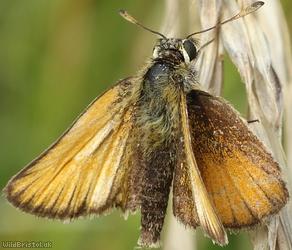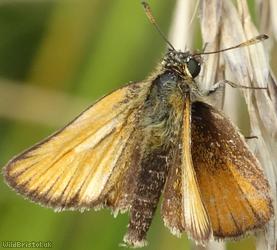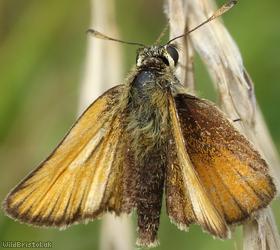Essex Skipper - Thymelicus lineola
Favourite Photos
| image | species | author | location | uploaded | taken | select |
|---|---|---|---|---|---|---|
 |
Essex Skipper - Thymelicus lineola | dylan | Meadow 2 | 5 Aug 2021, 11:10 a.m. | 4 Aug 2021, 4:25 p.m. | |
 |
Essex Skipper - Thymelicus lineola | dylan | Meadow 2 | 5 Aug 2021, 11:10 a.m. | 4 Aug 2021, 4:25 p.m. | |
 |
Essex Skipper - Thymelicus lineola | dylan | Meadow 2 | 5 Aug 2021, 11:10 a.m. | 4 Aug 2021, 4:25 p.m. |
Species Description
Common and widespread throughout Southern England and Eastern Wales (where it was first recorded in 2000) and scattered further North into Scotland. It continues to Expand North and West. Habitat includes: dry grassland (including acidic), chalk / limestone downland, roadside verges, railway banks, woodland rides, coastal marsh etc. Wing span: 27 - 30 mm. Diet: Larvae = Cock’s-foot Grass (Dactylis glomerata) is the main food plant although it will use several other grasses including: Creeping Soft-grass (Holcus mollis), Common Couch (Elytrigia repens), Timothy (Phleum pratense), Meadow Foxtail (Alopecurus pratensis), False Brome (Brachypodium sylvaticum), Tor-grass (B. pinnatum). It rarely uses Yorkshire-fog (Holcus lanatus). I believe it could use Upright Brome (Bromopsis erecta) given that I've seen the butterfly in areas where this species is dominant. Flight period: July to Early September. This butterfly has done the best out of any other British species, increasing its range by 104 % since the 1970s. Roadside verges have acted as corridors allowing it to reach new locations but also climate change is probably going in this butterflies favour with hotter drier summers. It was the last resident species to be described (1889) due to its difficulty separating it from the very similar Small Skipper. ID: Males have a thin black line running through the centre of the forewing, parallel to the leading edge, whereas the very similar Small Skipper lacks black tips to the antenna (best-viewed head-on) and has longer scent brand, angled to the edge of the forewing.